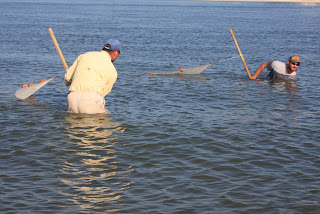Buying a house in Florida these days is like playing Russian Roulette. You might get a break on a foreclosure. You might get a house at 50% of the asking price from 2 years ago. And you might get a house tainted with Chinese Drywall.
As MaLe and I continue to search for an escape from the beehive (apartment complex) here in Fort Myers, we have had to cast a wider net to find the "house of our dreams" which doesn't exist because no one builds tree houses with vine elevators and bamboo cascade plumbing. Instead we're searching in an apocalyptic wasteland of vandalized homes and newly built horrors laced with sulphuric toxified drywall.
Throughout 2007 and 2008 I would decry the Lee County housing boom to my Everglades tourists as we escaped the urban sprawl and headed into the majestic swamp that I love. I despise the growth and never could understand how an economy driven by construction could be sustainable in what was once a natural landscape. Tourism needs to be king.
Lee County was one of the top 5 growing areas in the US from 2004-2008. Not so coincidentally it is now in the top 5 for foreclosures. During that time of catyclstmic growth, the US ran out of drywall and began importing hundreds of millions of sheets from China. It stands to reason that the top areas for residential growth would use the lion's share of Chinese drywall. We have a lot here and we have no idea where it all is.
Early in 2009 reports began to surface of foul smells eminating from the walls of dozens of homes in the area. The problem became a national crisis when it was determined that the sulphuric stench was coming from the drywall rending thousands of homes unlivable. Clearly drwall should not do this and as to date they have no good idea as to why it's off gassing. Nor do they have an idea of how to fix the problem. Builders are hesitant to step in although some have. Home Owner's Insurance does not cover this issue and governmental agencies are seemingly sniffing the gas themseleves and have been slow to react to the wideing crisis, although there are some efforts to support home owners. I'd love for some support for home buyers too.
The fumes are toxic. It corrodes electronics. It eats away at galvanized nails. It burns lungs and causes watery eyes. Some people have no choice but to live in their homes this way.
I feel for the people that live in these homes and have to pay mortgages. I also wonder if those that lost homes to foreclosure consider themsleves lucky to be out of the situation.
For us, the problem is growing more frustrating each day. We have been looking for houses for 5 months now. There are few in our price range and those that are could have Chinese Drywall. Sellers don't always disclose the presence of the toxic drywall. Sometimes they don't know if the house contains it. The new horror is flippers buying houses - tearing the toxic drywall out and rebuilding. They can sell a house that had Chinese Drywall without the buyer knowing. And who knows what the long term effects of the toxin will be even after the drywall is replaced.
I haven't even touched on the issue of 450 million sheets of Chinese Drywall and where it will end up.....
Putting an offer on a house tomorrow. 5 months. Time to pull the trigger.

 Ma-Le and Pia
Ma-Le and Pia An entrance to accommodate Giraffes
An entrance to accommodate Giraffes "Vegetative fuel" all around. In realtor speak that means plants that burn and are a threat to your house so you might want to cut them down.
"Vegetative fuel" all around. In realtor speak that means plants that burn and are a threat to your house so you might want to cut them down. Nice old Live Oak in the backyard
Nice old Live Oak in the backyard "Wood"-tiled floors
"Wood"-tiled floors "General Tso - get off the bed..."
"General Tso - get off the bed..." "General Tso - get out of the tub...."
"General Tso - get out of the tub...." Sunset on Sunniland
Sunset on Sunniland Moonrise over Sunniland
Moonrise over Sunniland










































